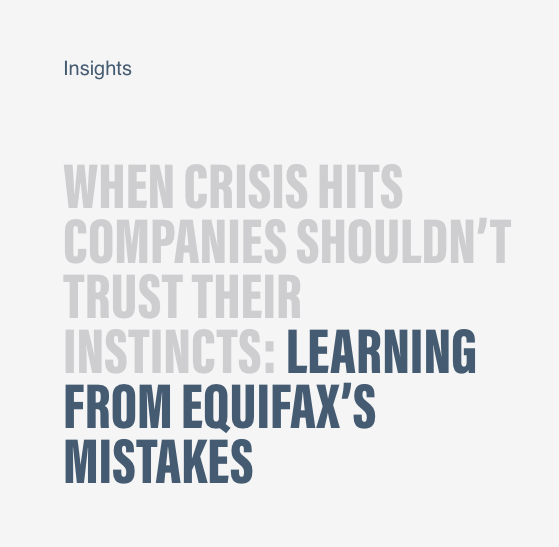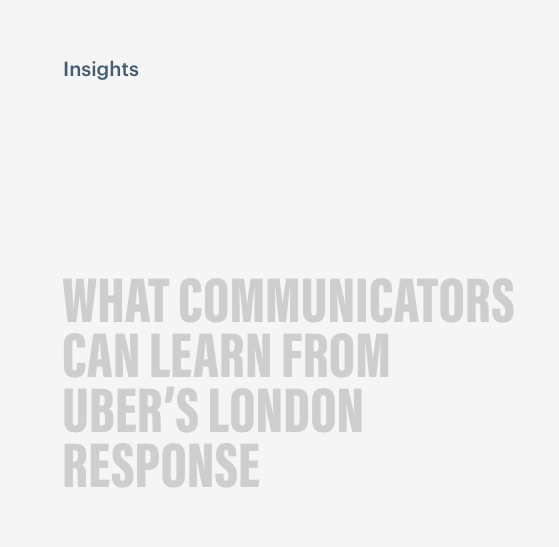Language of LGBTQ+ Identity
At maslansky + partners, we believe language is powerful. This holds especially true when it comes to diversity, equity, and inclusion, where language is critical to how we see and relate to each other. But when it comes to identity, language is also personal. To celebrate Pride last year, we invited our colleagues, friends, and family to share how they articulate their identify in our first Language of LGBTQ+ Identity. This year, we’re inviting new team members to share, as well as those who previously contributed, to highlight how the ways they articulate their identities might have evolved over the past year.
Words never stand still. It’s one of the things we love most about language – its use continuously changes and adapts to reflect our lives and the world we live in. The language of identity is no different and the language of LGBTQIA+ continues to evolve year after year, both in how we talk about our own personal identities, as well as categories of identity more broadly.
We’ve seen this firsthand at m+p – our own language has evolved over the past year to become more inclusive, adding “IA” to recognize those who identify as intersex as well as asexual, aromantic, and/or agender. In 2020, Gallup also updated how they ask about identity, allowing “transgender” to be selected alongside sexual orientation for the first time. And amid record-breaking appointments of people who identify as LGTBQIA+ to positions of government, Joe Biden became the first President to directly speak to the transgender community in a presidential victory speech, telling transgender Americans “your president has got your back.”
This evolution of language has helped to create greater visibility and awareness of the diverse identities within LGBTQIA+ communities. But language alone can’t create understanding – so far in 2021, thirty-three states have introduced more than 100 bills that aim to “curb the rights of transgender people across the country.” What language can do is act as a bridge to facilitate it, something we’re consistently reminded of in our work. All we have to be willing to do is listen.
Below, we share new perspectives of our LGBTQIA+ colleagues, friends, and family members about the language they use to articulate their identity — and why it matters. We present these perspectives in their unedited format to allow their voices to speak for themselves, but have bolded parts we found particularly powerful.
When I first came out three years ago, I panicked about how to introduce myself–or more accurately, how I felt I had to introduce myself. I remember asking a close friend at the time, “Does this mean I’m a lesbian now? Am I queer? Am I bi?” Her reaction has stuck with me ever since: laughing gently, she told me that just because who I was dating had changed, how I identified didn’t have to–unless I wanted it to.
Today, this philosophy still rings true to me–but instead of not being sure if I want to use a label to describe my sexual orientation, now I want to use lots of different words.My sexual orientation is fluid, as is the way that I talk about it. And, the words I use to describe my sexual orientation do more than just describe who I’m attracted to: they also help me express my beliefs and navigate where I do and don’t belong.
Most often, I use “queer” to describe my identity and sexual orientation. Beyond telling people that I’m not heterosexual, “queer” helps me communicate that I don’t believe that gender, or sexual orientation, is binary. “Queer” feels more flexible, which is authentic to my own sense of self because how I identify changes over time and in different circumstances. In many settings, “queer” can also help me communicate my social and political beliefs. In addition to “queer,” I sometimes use “gay”–which feels like a broad, sometimes playful way to talk about a larger culture to which I want to belong. And while “lesbian” doesn’t accurately describe my identity because I don’t exclusively date women, it can feel like the right way to describe my actions, feelings, or cultural belonging when I’m dating women. Lastly, while other people sometimes describe me as bisexual, I don’t identify with it–in part because of the stigma against bisexual women within the lesbian community, but also because I feel like it limits our understanding of sexual orientation to two categories. Knowing that my response to this prompt may change in a year or even six months, I tend to gravitate most toward language that is flexible and inclusive of many different, overlapping identities.
Hannah Sullivan, Senior Language Strategist at m+p
I went to a women’s college where a common outside assumption was that students were either full-on lesbians or LUGs (lesbian until graduation). This, among other factors, made me feel insecure about my sexuality. I always referred to myself as “mostly straight, but open to the right person”. These labels of LUG, lesbian, and even bisexual felt final. Restrictive. Made the commitment too real for me. I didn’t “come out” until several years later when I met my current girlfriend. That’s when I realized this was very real for me. But even then, I found it difficult to articulate how I identified beyond my love for her. While I don’t reject lesbian or bi/pansexual — Queer is the easiest and most accurate way for me to describe my identity, experience, heart, and thought process all in one word. I also feel proud to be part of the broader queer community which can sometimes feel siloed by other labels. And although this term has been controversial and negative in the past, I hope that it can serve as a beacon of light, love, and openness for people in the future.
Tegan Harcourt, Senior Language Strategist at m+p
“Call me by my name” was perhaps one of my first attempts at defining my sexual and gender identity. During my adolescent years, a time mired in expectations from those around me to meet the status quo, it felt empowering to just say, “You can call me by my name”. I was not yet comfortable with identifying with the language of the LGBTQ+ community. Words, and labels have power and I now count myself lucky enough to be able to identify for myself the descriptors I wish to hold. Now, I acknowledge, to say I am a black, cisgendered, queer, gender-nonconforming woman is quite a mouthful! However, each part of my identity is important and I, in the same way that many of my fellow queer friends and family have, wrestled with, contemplated on, and finally felt proud to find the words that fit my truth. Language helps me to step out into the world, fully declaring this is who I am. So while I can still say, “call me by my name,” I have so many more ways to express the intersections and idiosyncrasies of me- just be aware, it’s gonna be a mouthful!
Sasha, friend of m+p
Language has been used as a tool throughout history to both empower and oppress certain communities. Although we have reclaimed some of these terms as our own (most notably “queer” but also including other terms considered more offensive or graphic) they still hold the potential to sting and bring up insecurities and pain from our own journeys in naming our sexuality. I have noticed a cultural shift in how straight folks and allies identify their significant others; the term “partner” has become increasingly common as a gender-neutral moniker to soften the strictly gendered terms we often use to refer to our significant other(s). I applaud and celebrate that decision, and those efforts by allies to the LGBTQIA+ community. As a proud gay man, out of the closet for over a decade, I relish being able to refer to my “boyfriend”, and one day my “husband”. When I first started using the term “boyfriend” to refer to my chosen partner as a teenager, I was asked to use a “better” term to describe our relationship. For me, the stand and the fight comes from the free usage of those terms. Using “boyfriend” as a male presenting and identifying man also indicates to other queer folks that this is a safe space, and an ally is not far away. It certainly makes some people uncomfortable, especially those that don’t know many queer folks. However, just as important as it is for some to neutralize gender in how they refer to their partners, it is essential that queer folks continue to advocate for the validity of a partnership between two cisgendered men or women – the language we use to address that advocacy and validity matters.
Nick Wilders, Data Analyst at m+p
I’ve been musing on this more and more over the last year (perhaps because we’ve all been in our little bubbles and have had time to self-reflect), but a few pieces of language have really popped out and stuck. In short, I am a polyamorous queer woman. It feels good to have found language that works for me in identifying not only my sexuality, but also the communities in which I actively participate. Truthfully, the harder element of this to identify verbally has been the polyamorous piece. “Queer” has become a much more socially acceptable term, and as a result, a more acceptable identity. But it feels strange to announce that there may be multiple partners who hold significance in my life; though at the same time it feels wrong not to acknowledge their presence and importance through my own language and identity. In this sense, terminology holds a lot of power for me — in a large part to overcome my own internal biases, and to present fully as the person I am and want to be.
Sarah Hendry, Vice President at m+p
Throughout my coming out process, it is undeniable that the language surrounding my sexual identity was something that I struggled with. I’m sure that many members of the LGBTQ+ community would agree that their sexuality presented one of the first experiences where the connotations of specific words held them back from communicating their truth. Looking back, it is interesting to consider the power that a three-letter word, gay, had over me and the implications that I thought it had. However, as I grew up and gained more comfort with who I was, my sexual identity meant something completely different. As a young teenager, “gay” would bring different words to mind including bullying, prejudice and insecurity, but they slowly developed to thoughts of acceptance, bravery and love. Ultimately, I think it is important to recognize the dynamic role that language plays in our lives and how it can reflect a sense of personal growth and empowerment.
Cole, friend of m+p
More than a year into the new ways of relating with people and spaces, I feel the relationship with the language that defines my identity has expanded at the same pace that I understand the spaces where I live. Those spaces are not always physical; they include the relationships and communities I experience.
It’s been years since I’ve come to peace with the fact that I’m attracted to men, and that made me think it was then obvious when I was gay. So this year, when I started developing feelings for someone who didn’t identify as a man, I had to rethink what being “gay” really means. Thinking I was defining myself, I was also conditioning the person I love — which for me sounds like an oxymoron. Love is helping those I love to find themselves, not condition them with my expectations.
My experience of coming to terms with having a different sexual orientation was not easy. I was able to do it because I had a support system and privileges that made it easier, like being a white Latino, cis-gendered, or not living with a disability. One change I’ve made to create space for others with different conditions is to identify me and not them and say I’m Queer. This means that I am not conditioning love to those who perform gender in any way I want to, but that also gives them the agency to do it only for them.
Juan-Pablo, Language Strategist








